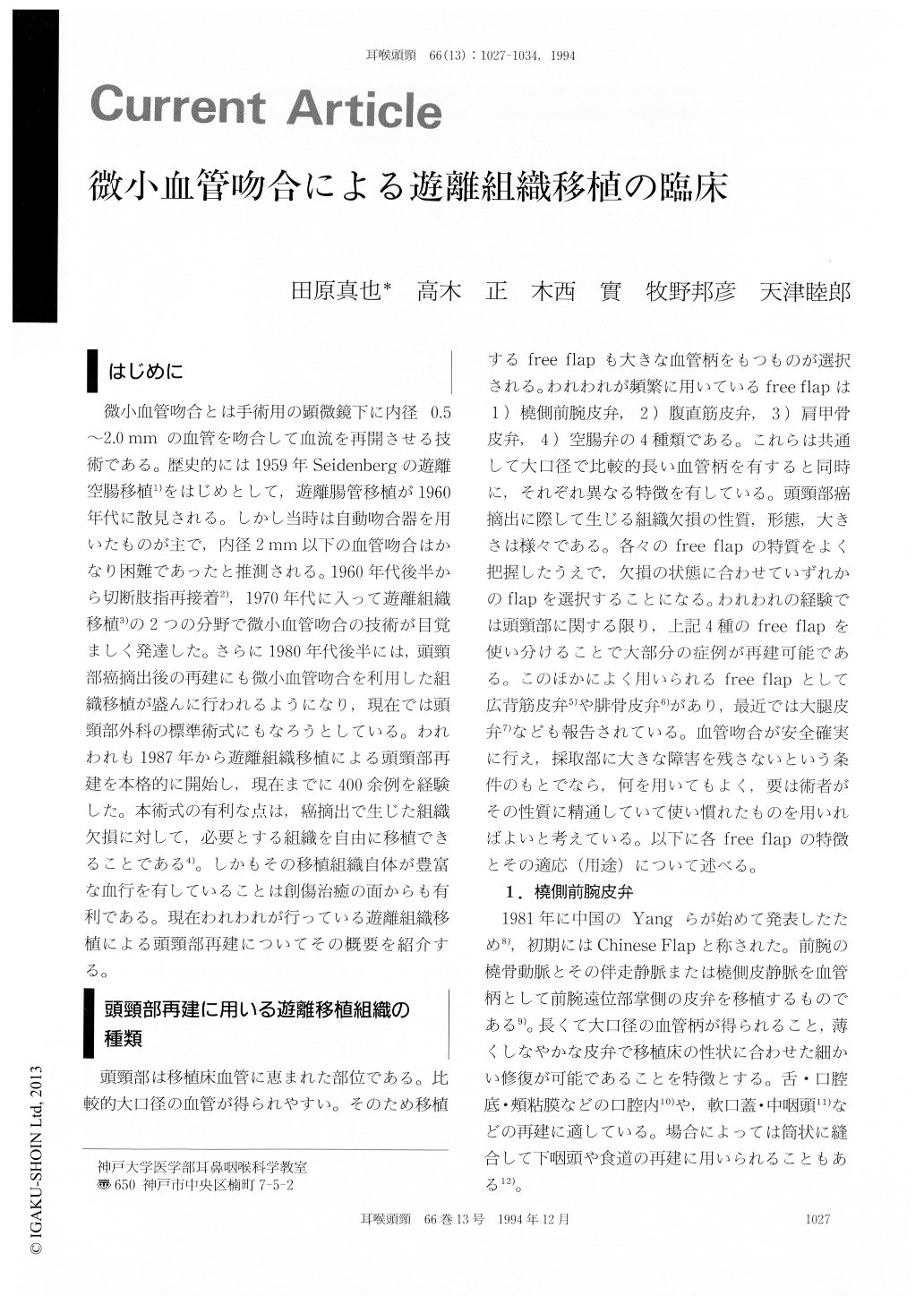Japanese
English
- 有料閲覧
- Abstract 文献概要
- 1ページ目 Look Inside
はじめに
微小血管吻合とは手術用の顕微鏡下に内径0.5〜2.0mmの血管を吻合して血流を再開させる技術である。歴史的には1959年Seidenbergの遊離空腸移植1)をはじめとして,遊離腸管移植が1960年代に散見される。しかし当時は自動吻合器を用いたものが主で,内径2mm以下の血管吻合はかなり困難であったと推測される。1960年代後半から切断肢指再接着2),1970年代に入って遊離組織移植3)の2つの分野で微小血管吻合の技術が目覚ましく発達した。さらに1980年代後半には,頭頸部癌摘出後の再建にも微小血管吻合を利用した組織移植が盛んに行われるようになり,現在では頭頸部外科の標準術式にもなろうとしている。われわれも1987年から遊離組織移植による頭頸部再建を本格的に開始し,現在までに400余例を経験した。本術式の有利な点は,癌摘出で生じた組織欠損に対して,必要とする組織を自由に移植できることである4)。しかもその移植組織自体が豊富な血行を有していることは創傷治癒の面からも有利である。現在われわれが行っている遊離組織移植による頭頸部再建についてその概要を紹介する。
Our technique of microvascular surgery, four kinds of free flaps that we usually make use of, and clinical cases are presented. We propose these flapsas methods of choice for the head and neck recon-struction following tumor ablation. They are fore-arm flap, rectus abdominis musculocutaneous flap, scapular osteocutaneous flap, and jejunal flap. Through our 7-years' experience of over 400 consec-utive cases of head and neck reconstruction, almost all the defects caused by the tumor resection could be repaired with any of these flaps. Advantages of microsurgical free flaps and cautions about the microvascular anastomosis, especially about the monitoring of the vascular patency in early post-operative period, are discussed.

Copyright © 1994, Igaku-Shoin Ltd. All rights reserved.


